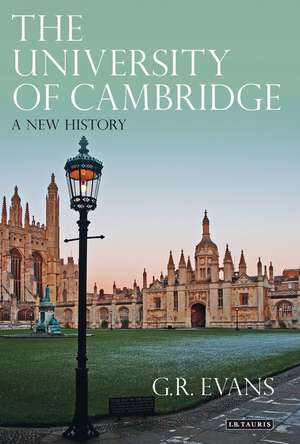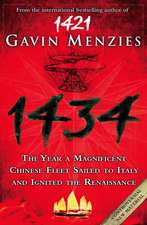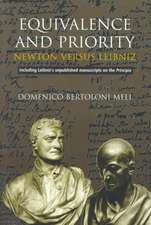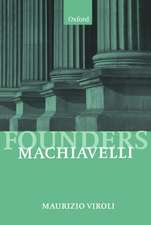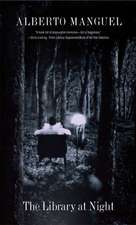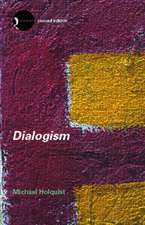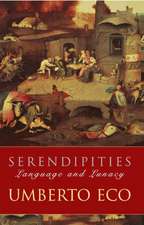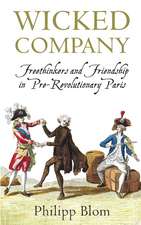The University of Cambridge: A New History
Autor Dr. G.R. Evansen Limba Engleză Hardback – 28 oct 2009
Preț: 412.65 lei
Preț vechi: 534.09 lei
-23% Nou
Puncte Express: 619
Preț estimativ în valută:
78.97€ • 81.94$ • 66.00£
78.97€ • 81.94$ • 66.00£
Carte tipărită la comandă
Livrare economică 15-29 martie
Preluare comenzi: 021 569.72.76
Specificații
ISBN-13: 9781848851153
ISBN-10: 1848851154
Pagini: 400
Ilustrații: 46 bw in 2x8pp plates, 2 maps
Dimensiuni: 156 x 234 x 41 mm
Greutate: 0.79 kg
Editura: Bloomsbury Publishing
Colecția I.B.Tauris
Locul publicării:London, United Kingdom
ISBN-10: 1848851154
Pagini: 400
Ilustrații: 46 bw in 2x8pp plates, 2 maps
Dimensiuni: 156 x 234 x 41 mm
Greutate: 0.79 kg
Editura: Bloomsbury Publishing
Colecția I.B.Tauris
Locul publicării:London, United Kingdom
Notă biografică
G R Evans is Professor Emerita of Intellectual History and Medieval Theology in the University of Cambridge. She has written many well received books in the fields of history, the history of ideas and religion, and also serves as editor of the I. B. Tauris History of the Christian Church series.
Cuprins
PrefaceAcknowledgements1. Cambridge in living memory: the last hundred yearsi. Where is the University?ii. Running their own showiii. Shall we let women in? iv. Meeting national needs: putting Cambridge in the spotlight v. The First World War and the spectre of state inspection againvi. Between the Wars vii. World War II and a new world for Cambridge viii Student revolution and eccentric dons: the swinging sixties ix. The Colleges and the University rethink their relationship x. Could Cambridge remain in a world of its own?xi. Cambridge discovers 'administration'xii. Cambridge's academics lose their securityxiii. A business-facing Cambridge?xiv. Intellectual property rights and academic freedomsxv. The capsize of CAPSAxv. So where are we now?2. How it all begani. Europe invents universitiesii. How it all began in Cambridge iii. Student life: the beginning of collegesiii. What was it like to study for a degree in medieval Cambridge?iv. The Dunce and the dunces: Cambridge as a backwater3. Cambridge and the Tudor Revolutioni. Margaret Beaumont and John Fisher turn Cambridge's fortunes roundii. The world as Cambridge's oyster iii. Cambridge joins the 'Renaissance' iv. Erasmus, Luther and a 'Reformation' Cambridgeiv. The Cambridge translatorsv. Visitations: the bid for state control of Cambridgevi. Edward VI and Cambridgevii. Queen Mary and the martyrs viii. Queen Elizabeth, Cambridge and protestant nationhood 4. Seventeenth and eighteenth century Cambridge: puritans and scientistsi. James I and Cambridgeii. Hybrid vigouriii. The Cambridge Platonists and the redrawing of the boundaries of theologyiv. Cambridge adjusts the relationship between God and naturev. Isaac Newton: a Cambridge character in close-upvi. Cambridge 'networking' on the international scene vii. Puritan rigour, Civil War and Restorationviii. John Milton and new trends in Cambridge language study ix. From logic to experimental sciencex. Enlightenment or marking time?5. The nineteenth century transformationi. Students have funii. The early nineteenth century call for reform iii. Scientific research becomes an academic activity with industrial outreachiv. Forming the academic sciences and making them intellectually respectablev. The 'learned societies' adjust their standardsvi. 'Call him a scientist'vii. Must science exclude theology?viii. Professorships and the emergence of academic specializationix. Teaching: should new 'useful ' subjects replace the classics?x. Cambridge reconsiders its duty to society: the long legacy of Prince Albert's Chancellorshipxi. Applying science: Cambridge and the industrial uses of university researchxii. Widening accessxiii. Entrances and exitsxiv. Cambridge graduates: good men, good citizensxv. Enter the Cambridge University ReporterConclusionGlossaryAbbreviationsBibliography
